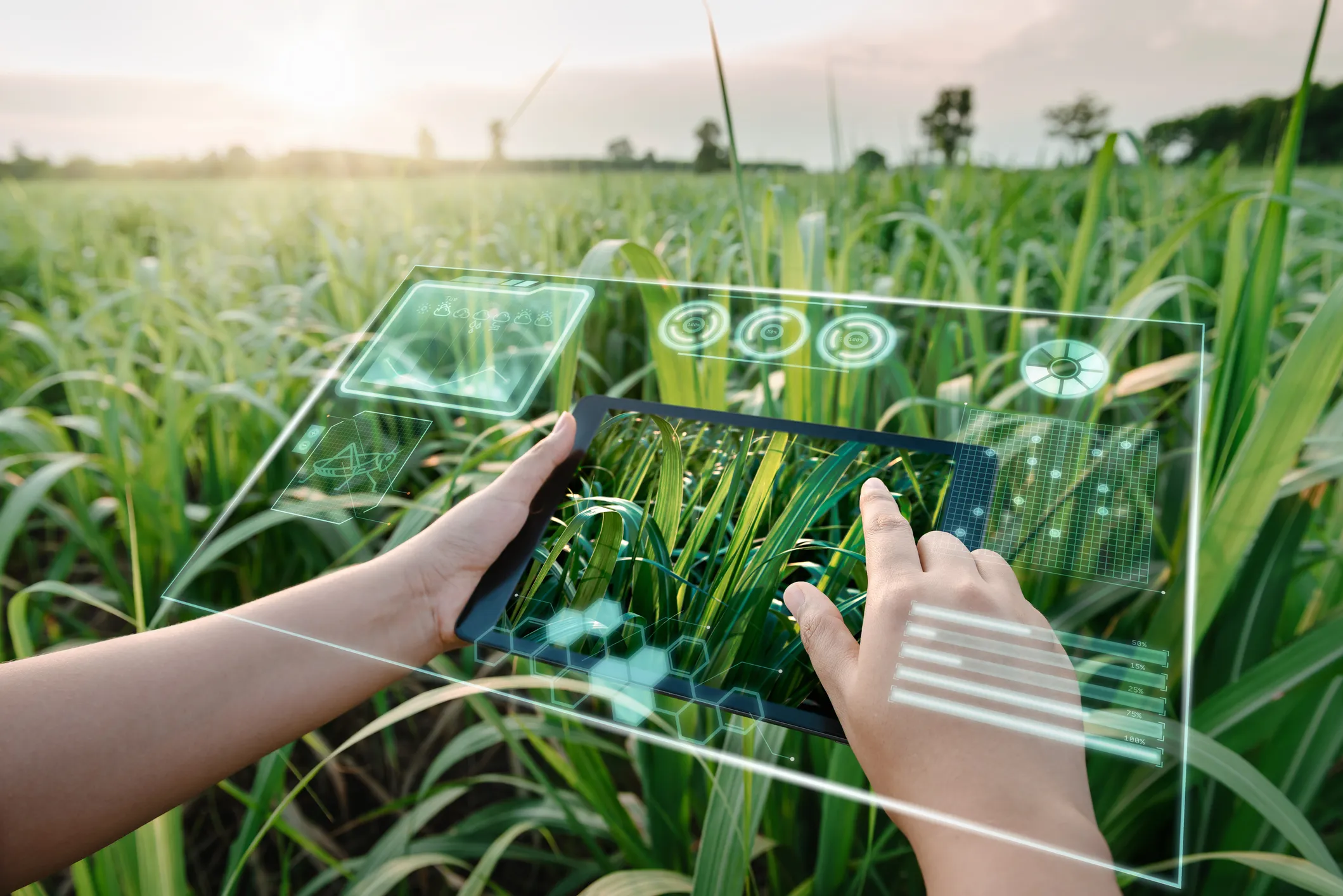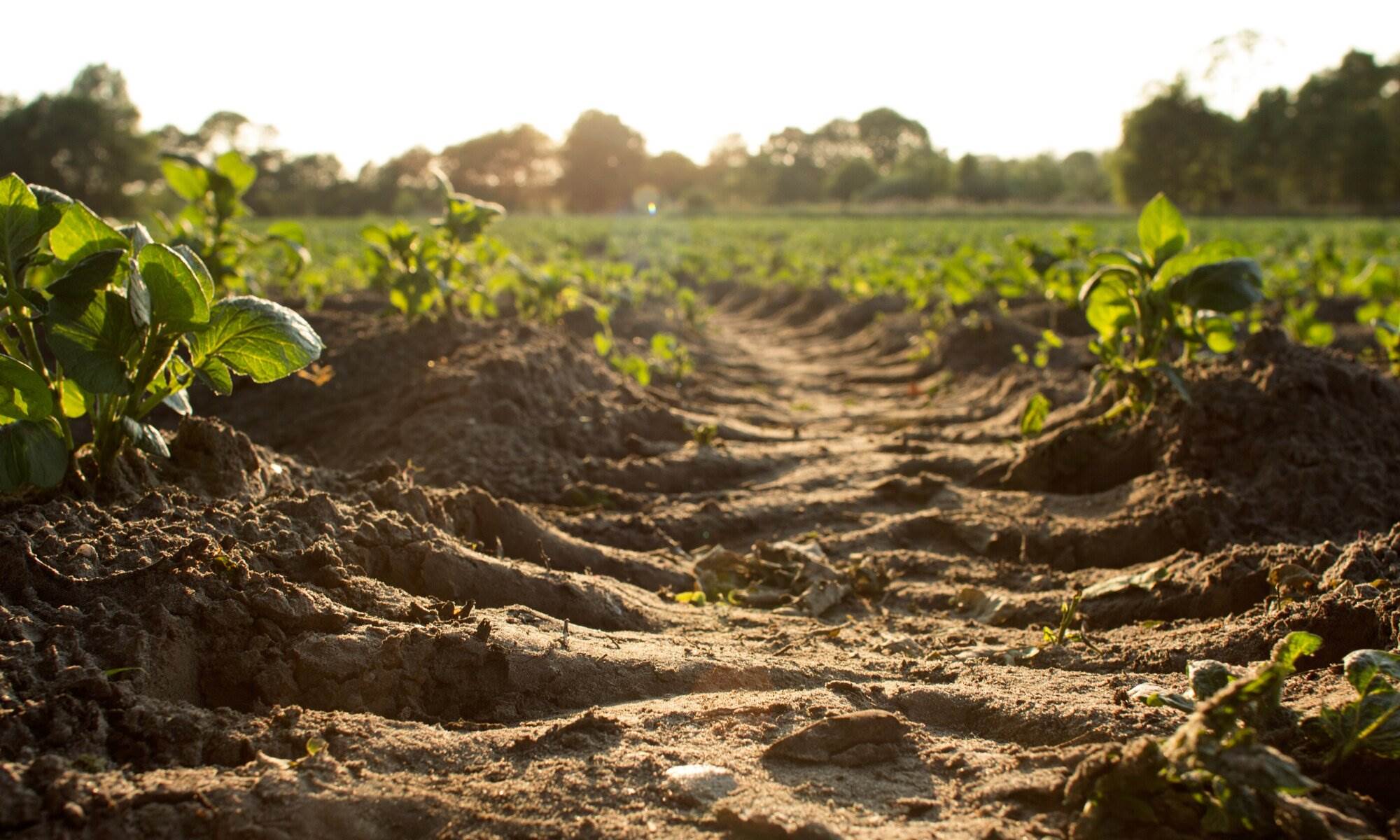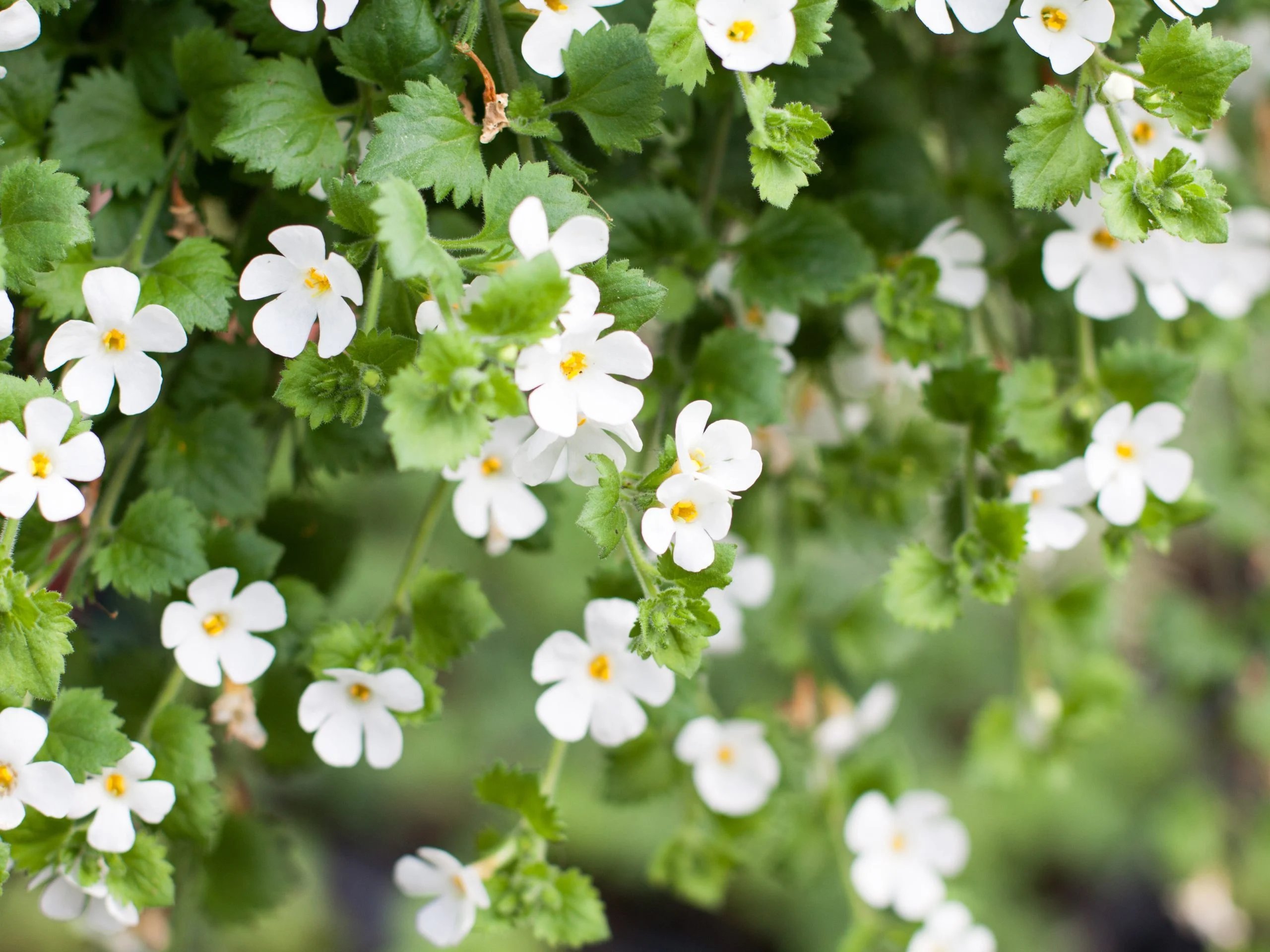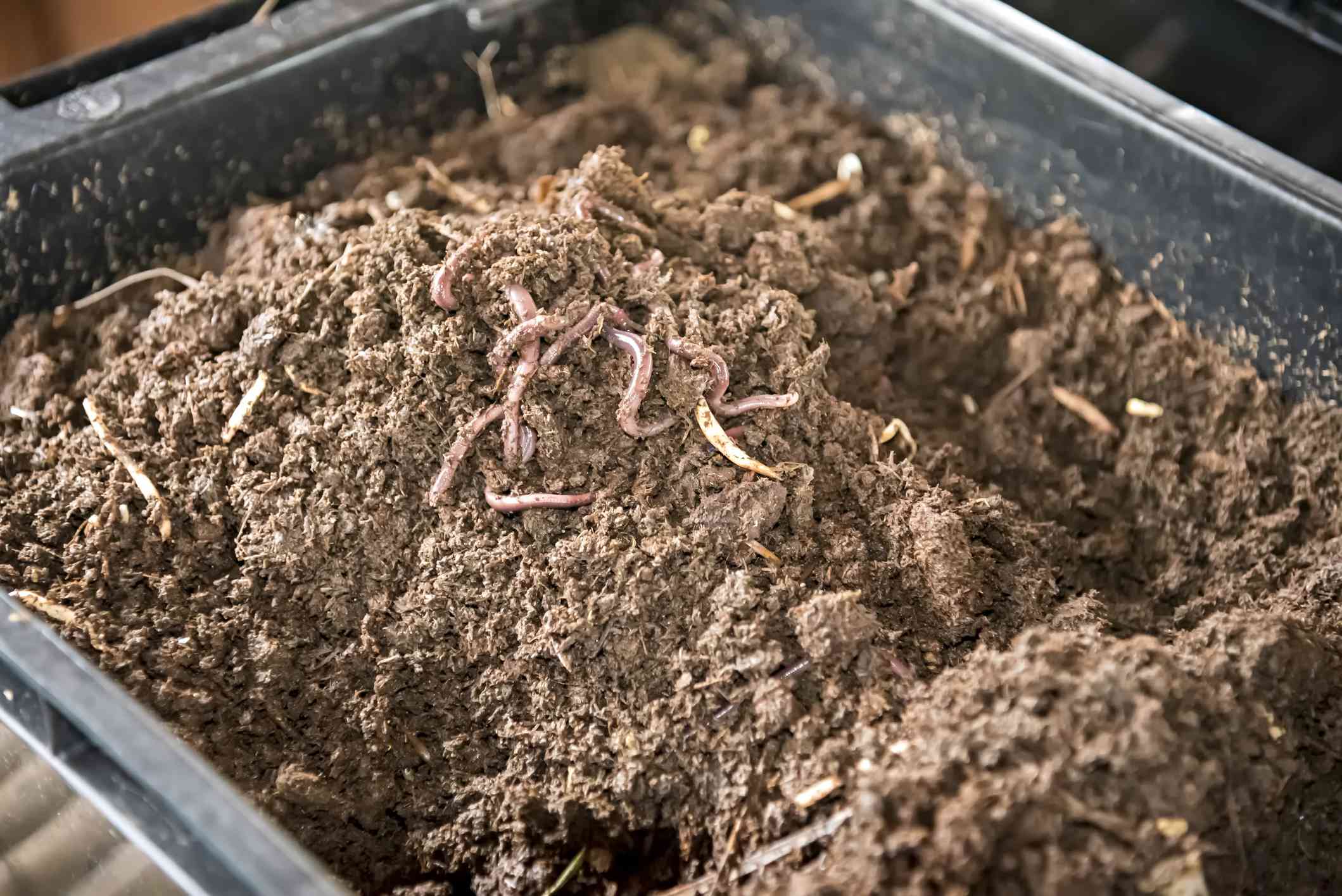Home>Gardening News and Trends>Gardening Trends>How Helpful Is Predictive Planting To Individual Farmers And The Agricultural Industry


Gardening Trends
How Helpful Is Predictive Planting To Individual Farmers And The Agricultural Industry
Published: August 29, 2023
Discover the impact of predictive planting on individual farmers and the agricultural industry. Stay ahead of gardening trends with this insightful guide.
(Many of the links in this article redirect to a specific reviewed product. Your purchase of these products through affiliate links helps to generate commission for Chicagolandgardening.com, at no extra cost. Learn more)
Table of Contents
- Introduction
- Definition of Predictive Planting
- Benefits of Predictive Planting for Individual Farmers
- Benefits of Predictive Planting for the Agricultural Industry
- Challenges and Limitations of Predictive Planting
- Current Applications of Predictive Planting Technology
- Case Studies of Successful Implementation of Predictive Planting
- Future Outlook and Implications of Predictive Planting
- Conclusion
Introduction
Gardening is an age-old practice that has evolved significantly over the years. From small backyard vegetable patches to industrial-scale agricultural operations, the art and science of cultivating plants have come a long way. In today’s fast-paced world, technology plays a crucial role in enhancing productivity and efficiency in every industry, and gardening is no exception.
One of the emerging trends in gardening is predictive planting. This innovative approach leverages advanced technologies, such as data analytics, machine learning, and sensor networks, to make informed decisions about when and how to plant crops. Predictive planting utilizes historical and real-time data on weather patterns, soil conditions, and plant growth to optimize planting schedules and improve crop yields.
The concept of predictive planting is not only beneficial for large-scale agricultural operations but also holds tremendous value for individual farmers and home gardeners. By employing predictive planting techniques, farmers can minimize risks, maximize resources, and ultimately improve profitability.
This article aims to explore the benefits of predictive planting for both individual farmers and the agricultural industry as a whole. We will delve into the advantages, challenges, and current applications of predictive planting. Additionally, we will examine case studies that demonstrate the successful implementation of predictive planting technologies. Finally, we will discuss the future outlook and implications of adopting predictive planting techniques.
As gardening enthusiasts, it is essential to stay informed about the latest trends and technologies that can help us become more successful in our planting endeavors. Let’s dive into the world of predictive planting and discover how it can revolutionize the way we garden and cultivate crops.
Definition of Predictive Planting
Predictive planting is an innovative approach to gardening and agriculture that utilizes advanced technologies and data analysis to optimize planting decisions. It involves the use of historical and real-time data on weather patterns, soil conditions, and plant growth to predict the optimal time and methods for planting crops.
Traditionally, farmers relied on experience, intuition, and general guidelines when determining when to plant their crops. However, these methods were often subject to uncertainties and external factors that could impact the success of the planting process.
With predictive planting, farmers and gardeners can leverage technology to make data-driven decisions, increasing the chances of a successful harvest. By analyzing large amounts of data, including historical climate patterns, soil moisture levels, and pest and disease predictions, predictive planting algorithms can provide precise recommendations on the best time to plant specific crops.
Key components of predictive planting include:
- Data collection: Gathering relevant data on climate, soil conditions, and other environmental factors.
- Data analysis: Applying advanced analytics techniques to interpret the collected data and identify patterns and trends.
- Model development: Creating mathematical models and algorithms that can predict optimal planting conditions based on the analyzed data.
- Recommendation generation: Generating tailored recommendations for farmers and gardeners, suggesting the ideal planting time, plant varieties, and cultivation techniques for each specific crop.
By leveraging predictive planting techniques, farmers can make informed decisions about crop rotation, seed selection, and resource allocation. They can identify the best window of opportunity for planting, taking into account factors such as weather forecasts, soil moisture levels, and pest populations. This enables them to optimize their planting schedules, improve crop yields, and reduce the risk of crop failure.
Overall, predictive planting combines the power of technology and data analysis to revolutionize the way we approach growing crops. By harnessing the capabilities of predictive planting, farmers and gardeners can make smarter planting decisions, leading to more productive and sustainable agricultural practices.
Benefits of Predictive Planting for Individual Farmers
Predictive planting offers a multitude of benefits to individual farmers, empowering them with data-driven insights to optimize their planting decisions and improve their overall success. Here are some key advantages of predictive planting:
- Increased Crop Yields: By utilizing predictive planting techniques, farmers can identify the optimal planting time and conditions for different crops. This maximizes the chances of successful germination, growth, and overall crop health, leading to increased yields.
- Minimized Risk of Crop Failure: Predictive planting considers various factors like weather patterns, soil conditions, and pest predictions to determine the best time to plant. By avoiding unfavorable conditions, farmers can minimize the risk of crop failure due to adverse weather, pests, or diseases.
- Efficient Resource Allocation: By knowing the ideal planting time, farmers can efficiently allocate resources such as water, fertilizer, and labor, resulting in more sustainable and cost-effective practices.
- Optimized Crop Rotation: Predictive planting helps farmers plan crop rotations effectively by considering factors like plant disease susceptibility, nutrient requirements, and soil health. This prevents the buildup of pests and diseases and improves soil fertility, leading to healthier crops and higher yields.
- Improved Pest and Disease Management: Predictive planting technology provides valuable insights into pest and disease predictions. Farmers can take preventive measures, such as timely application of appropriate pesticides or implementation of integrated pest management strategies, to mitigate the risk of crop damage.
- Enhanced Decision-Making: Predictive planting algorithms analyze vast amounts of data to generate tailored recommendations. This data-driven approach helps farmers make informed decisions about crop selection, planting techniques, and resource management, leading to more effective and profitable farming practices.
- Improved Sustainability: By optimizing planting schedules and resource allocation, predictive planting enables farmers to practice sustainable agriculture. This includes reducing water usage, minimizing chemical inputs, and implementing efficient farming practices, leading to a more environmentally friendly and resilient farming system.
The benefits of predictive planting are not limited to large-scale agricultural operations. Even individual farmers, including home gardeners, can leverage these advantages to improve their garden productivity, minimize risks, and enjoy a bountiful harvest.
In the next section, we will explore the benefits of predictive planting for the agricultural industry as a whole.
Benefits of Predictive Planting for the Agricultural Industry
Predictive planting holds significant benefits for the agricultural industry, revolutionizing the way crops are grown and managed. Here are some key advantages of predictive planting for the agricultural industry:
- Increased Productivity: Predictive planting enables farmers to optimize planting schedules, leading to increased crop productivity. By planting crops at the ideal time and under optimal conditions, farmers can achieve higher yields and improve overall agricultural output.
- Improved Resource Management: With predictive planting, farmers can efficiently allocate resources such as water, fertilizers, and pesticides. By utilizing data-driven insights, farmers can reduce waste and make more sustainable choices, resulting in cost savings and environmental benefits.
- Enhanced Sustainability: Predictive planting promotes sustainable agricultural practices by reducing the use of chemicals, water, and other resources. By optimizing planting schedules and implementing precision agriculture techniques, farmers can minimize the negative environmental impacts associated with traditional farming practices, contributing to a greener and more sustainable agricultural industry.
- Better Risk Management: Predictive planting helps mitigate risks associated with adverse weather conditions, pests, and diseases. By utilizing historical and real-time data, farmers can make more informed decisions, reducing the potential impact of such risks on crop production and ensuring a more stable and resilient agricultural industry.
- Improved Supply Chain Management: With precise planting schedules and higher crop yields, predictive planting contributes to a more efficient and reliable agricultural supply chain. Farmers can better plan harvesting and distribution, ensuring that fresh produce is available consistently, reducing food waste, and meeting consumer demand more effectively.
- Optimized Crop Selection: Predictive planting enables farmers to select the most suitable crop varieties based on soil conditions, climate patterns, and market demands. By planting the right crops in the right locations, farmers can increase profitability and contribute to a more diverse and resilient agricultural sector.
- Facilitates Precision Agriculture: Predictive planting is a key component of precision agriculture, where technology is used to optimize farming practices and increase efficiency. By integrating predictive planting with other technologies such as satellite imagery, IoT sensors, and automation, farmers can achieve precision in planting, irrigation, fertilization, and crop protection, resulting in higher productivity and reduced environmental impact.
Overall, predictive planting has the potential to transform the agricultural industry by increasing productivity, reducing risks, improving sustainability, and optimizing resource management. As farmers and agricultural stakeholders embrace this technology, we can expect a more efficient and sustainable food production system that meets the demands of a growing global population.
Challenges and Limitations of Predictive Planting
While predictive planting offers numerous benefits, there are also several challenges and limitations that need to be considered. Here are some key challenges of predictive planting:
- Data Quality and Availability: The accuracy and availability of data are crucial for effective predictive planting. Obtaining high-quality, reliable, and comprehensive data on weather conditions, soil characteristics, and other variables can be a challenge, especially in remote or underdeveloped areas.
- Complex Data Analysis: Analyzing massive quantities of data and developing accurate predictive models can be complex and resource-intensive. Farmers and agricultural stakeholders may require specialized knowledge, skills, and resources to effectively analyze and interpret the data for making informed planting decisions.
- Integration of Multiple Data Sources: Predictive planting relies on integrating data from multiple sources, such as weather stations, satellite imagery, soil sensors, and historical data. Ensuring seamless integration and compatibility among these diverse data sources can pose technical and logistical challenges.
- Model Complexity and Interpretability: The predictive models used in planting decision-making can be complex, making it difficult for farmers to understand and interpret the recommendations. It is crucial to develop user-friendly interfaces and tools that present the predictions and insights in a simple and actionable format for farmers to utilize effectively.
- Adoption and Accessibility: Adopting predictive planting technologies may require initial investments in infrastructure, equipment, and training. These costs may restrict the accessibility and adoption of predictive planting, particularly for small-scale farmers with limited resources.
- Site-Specific Variability: Agricultural fields can exhibit significant spatial and temporal variability, making it challenging to generalize recommendations across different locations and microenvironments. Developing site-specific models and recommendations tailored to specific regions and field conditions can help address this limitation.
- Unpredictable Factors: Predictive planting relies on historical and real-time data, but certain unpredictable factors, such as sudden weather changes or pest outbreaks, may deviate from the predictions. Farmers should be prepared to adapt their planting strategies based on real-time observations and response mechanisms.
- Ethical Considerations: The use of data analytics and advanced technologies in predictive planting raises ethical questions regarding data privacy, ownership, and the potential for unequal access to information. It is crucial to address these concerns and ensure transparency, fairness, and responsible use of data in the implementation of predictive planting technologies.
These challenges and limitations highlight the need for ongoing research, development, and collaboration in the field of predictive planting to overcome these obstacles. By addressing these challenges, we can unlock the full potential of predictive planting and make it more accessible and beneficial for farmers and the agricultural industry as a whole.
Current Applications of Predictive Planting Technology
Predictive planting technology is being implemented across various sectors of the agricultural industry, offering valuable insights and improving planting practices. Here are some of the current applications of predictive planting technology:
- Commercial Agriculture: Large-scale commercial farms are increasingly adopting predictive planting technology to enhance their productivity and profitability. By analyzing weather data, soil conditions, and historical trends, farmers can optimize planting schedules, select the most suitable crop varieties, and allocate resources effectively.
- Precision Agriculture: Predictive planting is a key component of precision agriculture, which aims to optimize farming practices using advanced technologies. By integrating predictive planting with technologies like GPS, sensors, and drones, farmers can precisely plant crops, tailor irrigation and fertigation, and implement targeted pest and disease management strategies.
- Smart Greenhouses: Predictive planting technology is being utilized in smart greenhouse systems to optimize growing conditions for crops. By analyzing environmental parameters such as temperature, humidity, and light levels, farmers can adjust the greenhouse environment to create optimal conditions for plant growth and maximize yields.
- Urban Farming: Predictive planting technology is being applied in urban farming settings, where space and resources are limited. By utilizing data on microclimates and optimizing planting schedules, urban farmers can maximize productivity in small-scale gardens or vertical farms, making efficient use of available space and resources.
- Crop Forecasting: Predictive planting technology is used in crop forecasting to estimate future yields and market conditions. By analyzing planting data, weather patterns, and historical trends, agricultural economists and policymakers can make informed decisions regarding crop prices, supply chain management, and food security planning.
- Field Monitoring and Management: Predictive planting technology is employed in field monitoring and management systems to identify and address issues in real-time. By analyzing sensor data from the field, farmers can detect anomalies in soil moisture levels, plant health, and nutrient status, enabling them to take prompt action to mitigate potential risks or optimize crop performance.
These current applications demonstrate the versatility and potential impact of predictive planting technology across different agricultural settings. As technology continues to advance, we can expect further innovations and the expansion of predictive planting into other areas of the agricultural industry.
Case Studies of Successful Implementation of Predictive Planting
Several case studies highlight the successful implementation of predictive planting technology, showcasing its benefits and positive impact on crop production. Let’s explore some of these real-world examples:
- Case Study 1: Climate FieldView
- Case Study 2: AeroFarms
- Case Study 3: John Deere’s Precision Planting
- Case Study 4: Plantix App
Climate FieldView is a leading platform that integrates predictive planting technology for farmers. By combining historical climate data, real-time weather monitoring, and field-specific information, the platform provides farmers with actionable insights to optimize planting decisions. In one case study, a farmer utilized Climate FieldView to analyze soil moisture levels and weather patterns. As a result, they were able to adjust their planting schedule and irrigation practices, resulting in a 10% increase in yield and a reduction in water usage by 15%.
AeroFarms, a vertical farming company, utilizes predictive planting technology to optimize crop growth in indoor environments. By analyzing data on light intensity, temperature, humidity, and nutrient levels, AeroFarms can create customized growing conditions for each crop. In a case study, their implementation of predictive planting resulted in a 390% increase in crop yield compared to traditional farming methods. This success was attributed to precise control over growing conditions and the ability to continuously optimize planting techniques.
John Deere’s Precision Planting technology utilizes predictive planting algorithms to help farmers optimize their planting practices. In a case study, a farmer used Precision Planting’s software to analyze soil data, weather forecasts, and pest predictions. By adjusting their planting schedule and implementing targeted pest management techniques, the farmer achieved a 15% increase in corn yield and reduced the use of chemical pesticides by 20%, resulting in cost savings and improved sustainability.
The Plantix app combines predictive planting algorithms with image recognition technology to assist small-scale farmers in crop diagnosis and management. In a case study, farmers in India utilized the Plantix app to identify pest infestations and diseases affecting their crops. The app provided timely recommendations for pest control and treatment methods, resulting in a 30% reduction in crop loss and an overall improvement in crop health and productivity.
These case studies highlight the effectiveness of predictive planting technology in optimizing planting decisions and improving crop yields, demonstrating its potential to revolutionize farming practices across different scales and environments. As more farmers and agricultural stakeholders adopt these technologies, we can expect further success stories and advancements in predictive planting.
Future Outlook and Implications of Predictive Planting
The future of predictive planting is poised to bring transformative changes to the agricultural industry. As technology continues to advance and more data becomes available, we can expect several significant implications and opportunities:
- Advancements in Data Analytics: Predictive planting will benefit from advancements in data analytics and machine learning algorithms. These developments will improve the accuracy of predictions, enable more precise modeling of crop growth, and enhance the ability to analyze complex relationships between environmental factors and planting outcomes.
- Integration of IoT and Sensor Technologies: The integration of internet of things (IoT) devices and sensor technologies will provide real-time data on soil moisture, temperature, and other environmental parameters. This data will enable farmers to make more informed decisions about irrigation scheduling, nutrient management, and pest control, further optimizing their planting practices.
- Expansion of Predictive Planting to Small-Scale Farming: As predictive planting technologies become more accessible and affordable, small-scale farmers and home gardeners will also benefit. Mobile apps, simplified interfaces, and cloud-based platforms will allow individuals to access and utilize predictive planting algorithms, empowering them to make more informed decisions and improve their crop yields.
- Improved Crop Resilience and Adaptation: Predictive planting can help farmers adapt to the challenges posed by climate change. By identifying optimal planting windows and selecting more suitable crop varieties based on climate predictions, farmers can enhance crop resilience, mitigate yield losses, and maintain stable agricultural production in the face of changing environmental conditions.
- Enhanced Environmental Sustainability: The widespread adoption of predictive planting will contribute to improved environmental sustainability in agriculture. By optimizing resource allocation, reducing chemical inputs, and implementing precision farming techniques, farmers can minimize the environmental impact of their practices while maximizing productivity and profitability.
- Integration with Other Agricultural Technologies: Predictive planting will likely be integrated with other emerging technologies, such as autonomous farm machinery, farm robotics, and blockchain-based traceability systems. This integration will streamline and automate planting operations, enhance traceability and food safety, and optimize supply chain management.
- Data Sharing and Collaboration: The future of predictive planting may involve more extensive data sharing and collaboration among farmers, researchers, and agricultural stakeholders. Shared databases, open-source platforms, and collaborative networks will facilitate the exchange of data and knowledge, accelerating advancements in predictive planting techniques and benefiting the entire agricultural community.
The future of predictive planting is promising, paving the way for more sustainable, efficient, and productive agriculture. By embracing these technologies and capitalizing on the insights they generate, farmers can adapt to the evolving demands of the agricultural industry, enhance food security, and contribute to a more sustainable future.
Conclusion
Predictive planting is revolutionizing the world of agriculture, offering farmers and gardeners data-driven insights to optimize their planting decisions and improve crop yields. By leveraging advanced technologies such as data analytics, machine learning, and sensor networks, predictive planting enables informed choices about when and how to plant crops.
Throughout this article, we explored the definition of predictive planting and its benefits for individual farmers and the agricultural industry. We discussed how predictive planting enhances crop yields, minimizes the risk of crop failure, optimizes resource allocation, and improves sustainability. Additionally, we highlighted the challenges and limitations of predictive planting, such as data quality, integration, and adoption barriers.
We also delved into the current applications of predictive planting technology, including its use in commercial agriculture, precision agriculture, smart greenhouses, urban farming, crop forecasting, and field monitoring and management. Through real-world case studies, we witnessed the successful implementation of predictive planting, resulting in increased yields, improved resource management, and enhanced crop health.
Looking ahead, the future of predictive planting holds tremendous potential. Advancements in data analytics, IoT, and sensor technologies will further refine predictions and optimize planting practices. We anticipate the expansion of predictive planting to small-scale farming, fostering increased inclusivity and empowerment for individual farmers and home gardeners. Furthermore, the integration of predictive planting with other agricultural technologies, along with enhanced collaboration and data sharing, will drive efficiency, sustainability, and food system resilience.
In conclusion, predictive planting is a game-changer in the world of gardening and agriculture. By embracing this technology and utilizing its insights, farmers can achieve higher productivity, minimize risks, and contribute to a more sustainable and resilient agricultural industry. As predictive planting continues to evolve, it holds tremendous potential to address the challenges of food security, climate change, and resource management, ensuring a brighter future for farming and the global food supply.









